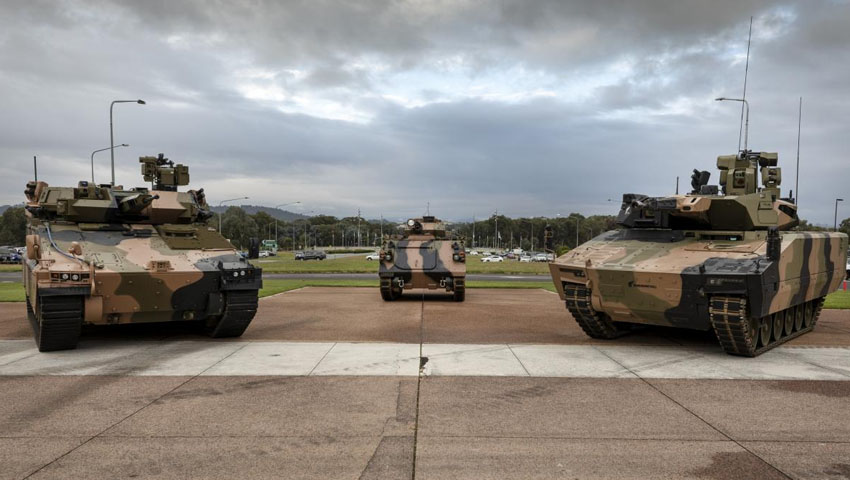The competing IFVs have been displayed in Canberra alongside the M113 as Defence weighs up their capabilities ahead of its decision on the LAND 400 Phase 3 program.
Hanwha Defense Australia’s Redback and Rheinmetall Defence Australia’s Lynx were displayed in Canberra on Friday (12 March).
The vehicles are contenders for the Commonwealth government’s LAND 400 Phase 3 program — a multibillion-dollar Army program that will recapitalise Army’s Vietnam-era M113 armoured personnel carrier (APC) force, with a combination of a tracked infantry fighting vehicle (IFV) and tracked APC
The IFVs will soon undergo a risk-mitigation activity, which is expected to include mobility, reliability and blast testing.
Defence is also expected to assess contracts, supply chains and maintenance associated with the vehicles, ahead of the government’s recommendation on the preferred tender, scheduled for 2022.
The competing IFVs were displayed at an event attended by senator Jim Molan and Major General David Coghlan, head armoured vehicle division at the Capability Acquisition and Sustainment Group (CASG).
“The world has changed, the M113 has been in service almost as long as I’ve been alive,” MAJGEN Coghlan said.
“The operational environment today is totally different, far more demanding and far more threatening.”
Three-man vehicle crews evaluating the IFVs are scheduled to commence conversion training in the coming weeks.
“The trial soldiers will be on a steep learning curve going into a fully digitised vehicle and turret, but they are up to it and are looking forward to putting the vehicles through their paces,” MAJGEN Coghlan added.
“Once a fleet of these is in our hands, they’ll operate in ways we haven’t contemplated yet.”
In addition to the three-man crew, the vehicles are capable of carrying six dismounted soldiers protected by armour and firepower.
“The role of the dismount in many ways won’t change, but they’ll be better protected and have much better communication and connectivity,” MAJGEN Coghlan said.
“How dismounts are used will be reflected in the ability of the vehicles to dominate the battlefield.”
Testing crew are also expected to consider the potential for future digital, mechanical and weapon upgrades.
MAJGEN Coghlan said the competing IFVs are purpose-built for the modern battlefield.
“Big equals protection and that in the modern environment equals weight, but increased weight does not mean decreased mobility,” he concluded.
Acting Minister for Defence Marise Payne also welcomed the arrival of the competing IFVs.
“These next-generation infantry fighting vehicles will provide Australian soldiers with higher levels of protection, mobility, firepower and connectivity,” the minister said.
“They will give our troops the best possible opportunity to successfully complete their mission safely.
“This project is part of the Morrison Government’s unprecedented $270 billion investment in defence capability over the next decade, which will protect our national and strategic interests for years to come.”
Senator Molan, a former Army Major General, added: “I am proud to be part of a Government that is investing in greater firepower and protection for the Australian Army.”
[Related; TacMed tapped to support Rheinmetall’s LAND 400 bid]









